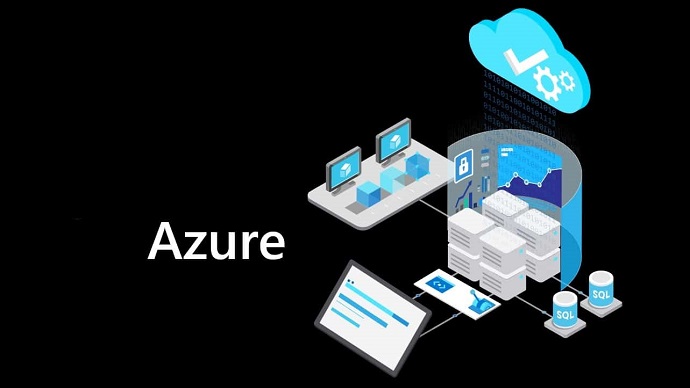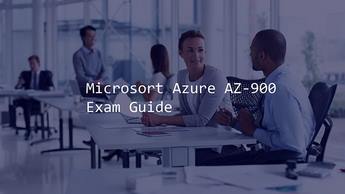Use VCE Exam Simulator to open VCE files

CISM Isaca Practice Test Questions and Exam Dumps
An information security risk analysis plays a crucial role in helping an organization to determine the most effective way to protect its assets and resources. Which of the following is the primary objective of conducting a risk analysis?
A. Ensuring that the infrastructure has the appropriate level of access control.
B. Making cost-effective decisions regarding which assets need to be protected.
C. Allocating an appropriate level of funding to security processes.
D. Ensuring the implementation of appropriate security technologies.
Answer:
B. Making cost-effective decisions regarding which assets need to be protected.
An information security risk analysis is an essential process for identifying, evaluating, and mitigating risks that may threaten an organization's information assets and overall security posture. The goal is to assess the likelihood and potential impact of various security threats, vulnerabilities, and exposures, and prioritize them based on their potential impact on the organization.
Option B is the correct answer because one of the primary outcomes of a risk analysis is the ability to make informed, cost-effective decisions about which assets need protection and which are most critical to the organization. This ensures that resources are allocated effectively, focusing on the most vulnerable or valuable assets and mitigating potential risks in a strategic manner.
While the other options also relate to security measures, they do not capture the core objective of risk analysis as accurately as option B. For instance:
Option A talks about access control, which is an important aspect of security, but access control is only one component of the broader security strategy.
Option C suggests that risk analysis directly determines the level of funding for security processes, but the funding decision typically comes after risk analysis, when the organization understands the risks and priorities.
Option D suggests the implementation of security technologies, which is a subsequent action that could be taken after identifying security needs through a risk analysis.
In practice, the process involves identifying potential risks, evaluating the impact of each risk, and determining the cost of mitigating those risks relative to the value of the assets. This allows organizations to prioritize their efforts and resources in a way that balances security with budget constraints.
A robust risk analysis process helps organizations avoid over-investing in security measures that may not be necessary and ensures they don’t under-invest in protecting critical assets. It also helps organizations address specific vulnerabilities in a targeted manner, leading to better protection of valuable resources while managing costs effectively.
In a multinational organization, why should local security regulations take precedence over the global security policy in certain cases?
A. Business objectives are defined by local business unit managers.
B. It is more practical to deploy awareness of local regulations rather than global policy.
C. Global security policies often include unnecessary controls for local businesses.
D. The requirements of local regulations take precedence.
Answer: D. The requirements of local regulations take precedence.
In a multinational organization, security policies and procedures must be designed to comply with both global corporate standards and local regulations. Local security regulations often take precedence over global security policies because of the need to comply with the legal and regulatory environment in each jurisdiction where the organization operates. This is especially critical when local laws impose strict data privacy, security, or compliance requirements that may differ significantly from the global security policies.
Option D is the correct answer because local regulations often contain specific legal requirements, such as data protection laws, encryption standards, or auditing practices, that an organization must follow to avoid legal consequences, including fines or reputational damage. For example, the General Data Protection Regulation (GDPR) in the European Union requires specific handling of personal data, and an organization operating in the EU must comply with these regulations, even if the global security policy does not explicitly address GDPR.
Other options, while they may seem relevant in certain contexts, do not fully capture why local regulations should take precedence:
Option A suggests that business objectives defined by local managers would determine the precedence of regulations, but business objectives alone don't necessarily dictate compliance with local laws. Regulatory compliance is often non-negotiable.
Option B proposes that local regulations are easier to implement than global policies. While this might be true from a practical standpoint, the overriding factor remains legal compliance with local laws, not ease of implementation.
Option C suggests that global policies may include unnecessary controls for local businesses. While this might sometimes be the case, global policies generally aim to establish a baseline of security standards that apply across all regions, and local regulations must still be adhered to even if they conflict with some global measures.
The key takeaway is that in multinational organizations, legal compliance with local laws and regulations should always be the top priority. Global security policies should be designed to allow for flexibility to accommodate local legal requirements, and when conflicts arise, the local law will usually take precedence to avoid legal repercussions.
To gain a comprehensive understanding of the impact that a new regulatory requirement will have on an organization’s information security controls, what should an information security manager prioritize as the first step in their evaluation process?
A. Conduct a cost-benefit analysis.
B. Conduct a risk assessment.
C. Interview senior management.
D. Perform a gap analysis.
Answer: B. Conduct a risk assessment.
Explanation:
When a new regulatory requirement is introduced, it is essential for an information security manager to first understand the potential risks and implications this regulation might have on the organization’s current security posture. A risk assessment should be the first step in this process because it helps identify and evaluate the risks associated with the regulatory changes, including their potential impact on the organization's existing information security measures. This step ensures that any gaps in compliance or vulnerabilities in the security system are detected early on, allowing for effective mitigation strategies to be implemented.
A risk assessment provides a structured approach to identifying potential threats, vulnerabilities, and the likelihood of their occurrence. It also helps assess the consequences of non-compliance with the new regulations. By evaluating these factors, the information security manager can prioritize security controls and resources effectively, ensuring compliance while minimizing any negative impact on the organization’s operations.
While conducting a cost-benefit analysis (option A) may be useful later in determining the financial feasibility of addressing the identified risks, it is not the most appropriate first step. Interviewing senior management (option C) is important for securing support and aligning security goals with the broader business strategy, but it does not provide the in-depth risk understanding needed for making informed decisions. Similarly, performing a gap analysis (option D) is an essential task for identifying discrepancies between current and required security controls, but it should follow after a risk assessment to ensure that the gaps identified are truly critical to the organization’s security needs.
By focusing on a risk assessment first, the information security manager can ensure that any regulatory changes are addressed in a way that minimizes risks to the organization’s information security framework.
When an organization’s management decides to change its business strategy, which process should be used to evaluate the effectiveness of existing information security controls and determine the need for new controls?
A. Access control management
B. Change management
C. Configuration management
D. Risk management
Answer: D. Risk management.
Explanation:
When there is a change in the organization’s business strategy, it is essential to re-evaluate the current information security controls and assess whether they remain effective in mitigating new risks or whether adjustments are needed. This process falls under risk management, which involves systematically identifying, assessing, and prioritizing risks to organizational assets, and then implementing measures to control or mitigate those risks.
The change in business strategy may introduce new business objectives, market conditions, or operational structures, all of which could affect the information security landscape. Risk management helps to identify these changes and assess their potential impact on the organization’s security posture. This includes evaluating the relevance of existing controls, identifying potential vulnerabilities that may emerge due to strategic shifts, and determining whether new or enhanced controls are needed to maintain adequate protection.
Access control management (option A) primarily focuses on the control and regulation of access to systems and data. While access control is a critical aspect of information security, it is not the process that should be used to evaluate overall security controls when there is a change in business strategy. Change management (option B) refers to the process of managing alterations to systems and infrastructure but does not specifically address security risks and controls in the context of a strategic shift. Configuration management (option C) ensures that systems are maintained in a known and secure state but does not encompass the broader risk analysis necessary when business strategy changes.
In conclusion, risk management is the most appropriate process to evaluate and adjust information security controls when the organization’s business strategy changes, ensuring that the security framework aligns with new business goals and emerging risks.
What is the most effective way to establish a risk-aware culture within an organization?
A. Periodically change risk awareness messages.
B. Ensure that threats are communicated organization-wide in a timely manner.
C. Periodically test compliance with security controls and post results.
D. Establish incentives and a channel for staff to report risks.
Answer: D. Establish incentives and a channel for staff to report risks.
Explanation:
Building a risk-aware culture is crucial to ensuring that employees at all levels of the organization are vigilant and proactive in identifying and addressing potential risks. One of the most effective ways to achieve this is by establishing a system that encourages employees to report risks and provides incentives for them to do so. This approach creates a culture where individuals feel responsible for the organization’s security and are motivated to contribute to its protection.
A reporting channel for risks allows employees to share their observations, concerns, or potential threats they encounter during their daily activities. When combined with incentives, it not only motivates employees but also fosters a sense of ownership and accountability regarding the organization’s security. Over time, this contributes to a culture where risk awareness becomes ingrained in the organization’s values.
Periodically changing risk awareness messages (option A) may help keep security top of mind, but it does not create a sustained, active engagement with risk management practices. Communicating threats in a timely manner across the organization (option B) is certainly important, but it is just one aspect of fostering a risk-aware culture, rather than a comprehensive approach. Testing compliance with security controls and sharing the results (option C) ensures that security standards are being met, but it doesn’t directly influence or engage employees in reporting or addressing risks proactively.
Establishing a reporting channel with appropriate incentives (option D) creates an environment where everyone feels empowered to act on risk concerns, thus building a strong and proactive risk-aware culture that supports the organization's overall security strategy.
Answer: C. Create an addendum to the existing contract.
Explanation:
When an information security manager discovers that a contract with a third-party vendor lacks clear provisions for safeguarding the organization’s critical data, the most prudent course of action is to create an addendum to the existing contract. This addendum can serve as a legal and binding document that specifically outlines the security measures the third party must implement to protect sensitive organizational data. It can also define the data handling, confidentiality, access controls, and breach notification protocols that must be adhered to, thereby ensuring compliance with the organization's information security standards and legal requirements.
Creating an addendum ensures that both parties are aligned regarding security expectations and responsibilities. It allows for a quick fix without the need to terminate or renegotiate the entire contract, which could be time-consuming and costly. By taking this approach, the organization can maintain its partnership with the vendor while ensuring that its critical data is adequately protected.
Option A, canceling the outsourcing contract, may seem like a viable option in extreme cases, but it is a drastic measure that can disrupt operations and lead to additional costs in finding a new vendor. Terminating the contract should be a last resort, not the first step.
Option B, transferring the risk to the provider, is not an ideal solution. While risk transfer is possible through insurance or other contractual means, simply transferring risk without addressing the underlying security shortcomings does not resolve the problem. The security of critical data is ultimately the organization's responsibility, and risk transfer should not absolve the vendor from taking necessary precautions.
Option D, initiating an external audit of the provider's data center, might be useful in assessing the provider’s existing security posture, but it is not the best first step. The issue at hand is contractual, not operational, and auditing may not resolve the immediate lack of clear security requirements in the contract.
In conclusion, the best approach is to amend the contract through an addendum that specifies the required security measures, ensuring clarity and legal protection for both the organization and the third-party provider.
A. Controls to be monitored
B. Reporting capabilities
C. The contract with the SIEM vendor
D. Available technical support
Answer: A. Controls to be monitored.
Explanation:
Before implementing a Security Information and Event Management (SIEM) system, the most critical factor to consider is the specific controls to be monitored. The primary function of a SIEM tool is to collect, correlate, and analyze security event data from various sources within an organization’s IT infrastructure. The effectiveness of the SIEM solution is heavily dependent on the organization’s understanding of which controls—such as network security, access control systems, and intrusion detection systems—need to be monitored to detect potential security threats.
By identifying the appropriate controls to monitor, the organization ensures that the SIEM tool is tailored to its unique security requirements. The tool must be configured to monitor high-risk areas and critical systems that could be susceptible to security breaches. This is the foundation for setting up the SIEM system and ensuring it delivers actionable insights that contribute to the overall security strategy.
While options B, C, and D are important considerations, they are secondary to understanding which controls need monitoring. For instance, reporting capabilities (option B) are important because they allow the organization to interpret and act upon the data collected by the SIEM tool, but without first identifying the key controls to monitor, the reports may be meaningless or incomplete. Similarly, while having a strong contract with the SIEM vendor (option C) is necessary for ensuring service levels, security, and support, it does not directly impact the immediate effectiveness of the SIEM system in detecting relevant security events. Lastly, technical support (option D) is essential for resolving issues that arise post-implementation, but the effectiveness of the tool is still rooted in the proper identification of controls to monitor.
In conclusion, identifying the controls to monitor before implementing a SIEM system is crucial, as it directly determines the success of the tool in enhancing the organization’s ability to detect and respond to security threats in a timely manner. Ensuring that the SIEM system is properly configured to focus on the right controls enables the organization to maximize its investment in the tool and strengthen its overall security posture.
A. Definitions of responsibilities
B. Retention schedules
C. System access specifications
D. Organizational risk
Answer: A. Definitions of responsibilities
Explanation:
An enterprise security policy serves as the guiding framework for an organization's security posture and procedures. It outlines the organization's approach to protecting its assets, managing risks, and ensuring compliance with regulatory requirements.
The correct answer, "Definitions of responsibilities," is most likely to be included in the policy because it provides clear guidelines on the roles and duties of individuals or teams in ensuring the security of systems and data. Security responsibilities must be well-defined for employees, contractors, and other stakeholders, specifying what is expected from each individual in maintaining the organization’s security standards. This could cover areas such as data protection, incident reporting, and user access controls. Without clear definitions of responsibility, an organization might struggle to hold individuals accountable for security breaches or failures.
The other options are less likely to be included in a general enterprise security policy:
B. Retention schedules are more specific to data management and might be part of a broader records management or data retention policy, rather than a security policy.
C. System access specifications typically detail who has access to which systems, and while relevant to security, these are more likely to be covered in access control policies or system-specific procedures.
D. Organizational risk is a broad concept that may be considered in risk management frameworks but would not typically be detailed within a security policy. Instead, it would be addressed at a higher level in the organization’s overall risk management or governance policies.
Therefore, the most critical element in a security policy is the clear definition of responsibilities, which ensures the policy is actionable and enforceable across the organization.
A. Develop a business case for funding remediation efforts.
B. Advise senior management to accept the risk of noncompliance.
C. Notify legal and internal audit of the noncompliant legacy application.
D. Assess the consequences of noncompliance against the cost of remediation.
Answer: D. Assess the consequences of noncompliance against the cost of remediation.
Explanation:
When an organization faces a situation where a legacy application is noncompliant with regulatory requirements but there is insufficient budget to remediate it, the information security manager needs to carefully assess the situation to determine the most prudent course of action.
The correct answer, "Assess the consequences of noncompliance against the cost of remediation," is the first step. This evaluation allows the manager to understand the severity and potential consequences of continuing with the noncompliant application. It involves considering both the legal and financial risks of noncompliance (such as fines, reputational damage, or operational disruption) and comparing them to the costs involved in remediation (which may include software updates, staff time, or new system investments). This analysis is essential to provide a justification for further actions, whether that is pushing for funding for remediation or accepting the risk.
The other options present less ideal initial steps:
A. Developing a business case is important, but it comes after assessing the consequences and understanding the true scope of the risk.
B. Advising senior management to accept the risk may be necessary later, but it should not be done before evaluating the implications of noncompliance.
C. Notifying legal and internal audit is important for regulatory compliance, but without first assessing the cost-benefit scenario, it's premature.
Thus, the first step is to thoroughly assess the situation, including the risks and costs, before moving forward with remediation or acceptance of risk.
A. Review the third-party contract with the organization's legal department.
B. Communicate security policy with the third-party vendor.
C. Ensure security is involved in the procurement process.
D. Conduct an information security audit on the third-party vendor.
Answer: C. Ensure security is involved in the procurement process.
Explanation:
When negotiating contracts with third-party vendors, security concerns must be an integral part of the process from the very beginning. The correct answer, "Ensure security is involved in the procurement process," emphasizes the importance of integrating security considerations throughout the vendor selection and contract negotiation process. By ensuring that security is involved early, the organization can set clear expectations for security requirements, ensure compliance with relevant standards, and address potential risks before any formal agreements are made.
Involving the security team from the start allows for the identification of potential vulnerabilities, clarification of data handling procedures, and the inclusion of security clauses in the contract (e.g., breach notification, data encryption requirements, and incident response protocols). This proactive approach minimizes risks associated with third-party relationships and ensures that security concerns are properly addressed in the final agreement.
The other options are important but less effective as standalone measures:
A. Reviewing the contract with the legal department is essential but only after security concerns have been identified. Legal reviews should be informed by the security team's input.
B. Communicating the security policy with the vendor is useful, but it should come after security requirements have been integrated into the contract and procurement process.
D. Conducting an information security audit is an excellent follow-up action once a vendor has been selected but should not replace the upfront involvement of security in the procurement process.
Therefore, the most effective way to address security concerns is to make security a priority early in the procurement process, ensuring that all security requirements are addressed and negotiated before the contract is signed.
Related Exams

Top Training Courses











SPECIAL OFFER: GET 10% OFF
This is ONE TIME OFFER

A confirmation link will be sent to this email address to verify your login. *We value your privacy. We will not rent or sell your email address.
Download Free Demo of VCE Exam Simulator
Experience Avanset VCE Exam Simulator for yourself.
Simply submit your e-mail address below to get started with our interactive software demo of your free trial.